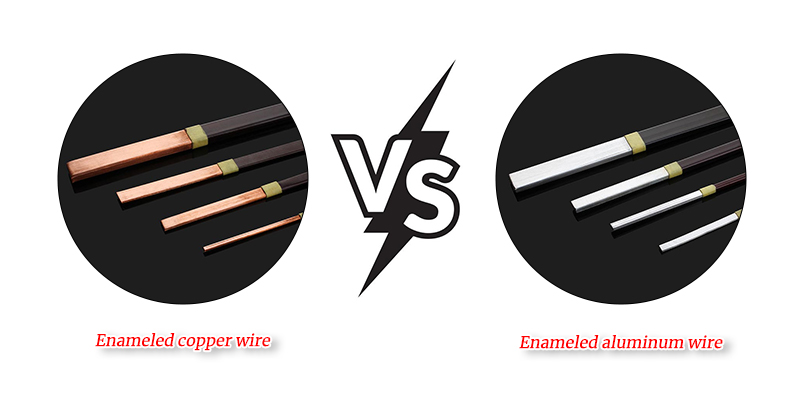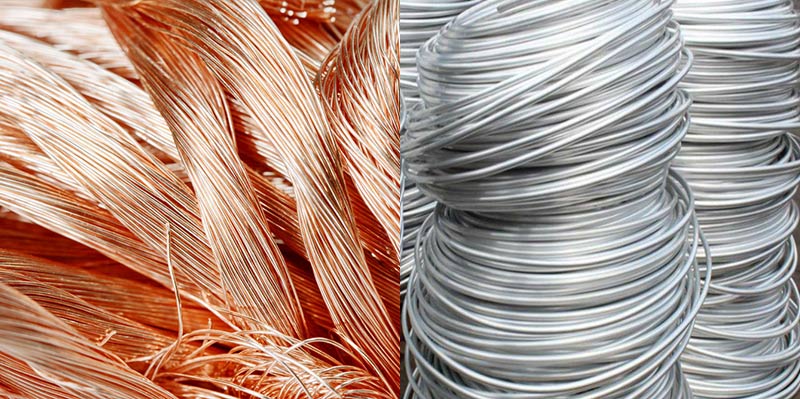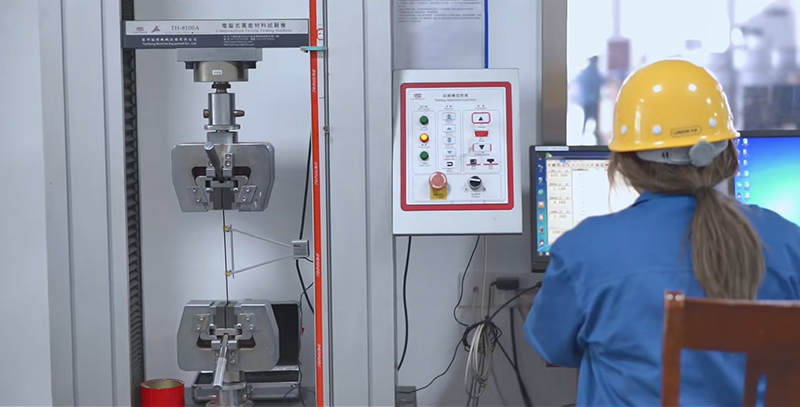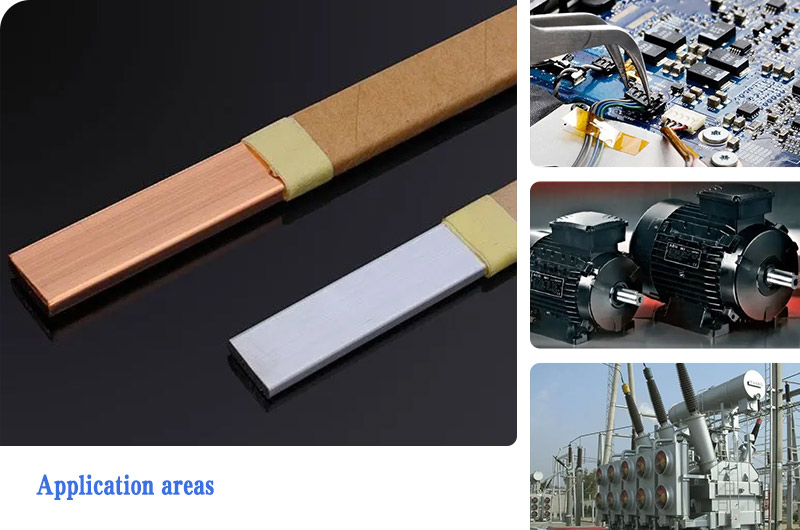Enameled Copper Wire vs Enameled Aluminum Wire
Updated : Feb. 19, 2024Enameled wire is a major type of winding wire, consisting of a conductor and insulation layer. After annealing to soften the bare wire, it undergoes multiple layers of coating and baking to form.
Enameled copper wire and enameled aluminum wire are both common types of enameled wire. So, what are the differences between them?

Comparison table of copper and aluminum conductor performance
| Performance | Aluminum | Copper |
|---|---|---|
| Tensile strength N/mm² | 120 | 260 |
| Resistivity (20℃)Q.mm²/m | ≤0.028264 | ≤0.017241 |
| Temperature resistance aR/℃1 | 0.00429 | 0.00393 |
| Thermal expansion coefficient μm/m.℃ | 23.8 | 16.6 |
| Thermal conductivity coefficient W/m.K | 226 | 402 |
| Melting point℃(Pure metal) | 660.4 | 1083 |
| Boiling point℃(Pure metal) | 2467 | 2567 |
| Density g/mm3(Pure metal) | 2.703 | 8.92 |
Metal substrate
Enameled aluminum wire is made of pure aluminum or aluminum alloy as the substrate, coated with insulation paint on the surface to make the wire material, while enameled copper wire is made of pure copper or copper alloy as the substrate covered with insulation paint film.

Weight
Due to aluminum's density being only 1/3 of copper's, enameled aluminum wire is significantly lighter than enameled copper wire for the same cross-sectional area. Enameled aluminum wire has a great advantage in weight-sensitive applications, such as small household appliances, mobile phones, and aerospace electronic equipment.
Conductivity
Since copper has a lower resistivity than aluminum, enameled copper wire has better conductivity than enameled aluminum wire. Therefore, in applications where resistivity is critical (such as high-sensitivity components and high-frequency transmission), enameled copper wire is the preferred choice.
Tensile strength
Copper wire is characterized by high hardness, high strength, and good ductility, with a tensile strength of up to 260 N/mm², while aluminum wire has a tensile strength of only 120 N/mm². The elongation at break of copper ranges from 15-35%, while for aluminum, it is 10-30%. Therefore, enameled copper wire is less prone to fracture and has an advantage in high-strength applications.

Price
Copper is a more expensive metal, so enameled copper wire is typically more costly. Aluminum is cheaper than copper, making enameled aluminum wire generally more competitively priced. In some conventional applications, using enameled aluminum wire can lower costs.
Welding method
Due to the differences in melting point and thermal conductivity between aluminum and copper, enameled aluminum wire typically requires specialized aluminum solder and welding techniques for joining, while enameled copper wire can be welded using conventional methods such as arc welding, gas shielded welding, spot welding, etc.
Stripping method
When chemically stripping enamel, aluminum is more sensitive to oxidation and requires specialized chemical solvents. Copper, with its relatively stable chemical properties, can be dissolved using more common organic solvents such as acetone or ethyl acetate.
Applications
Both enameled aluminum and copper wires are used in various electronics, appliances, tools, motors, relays, and transformers. Enameled copper wire is pricier and suited for high-end products and critical components like high-end appliances and motors. In contrast, enameled aluminum wire is more cost-effective and suited for lower-end products and conventional electronics.





